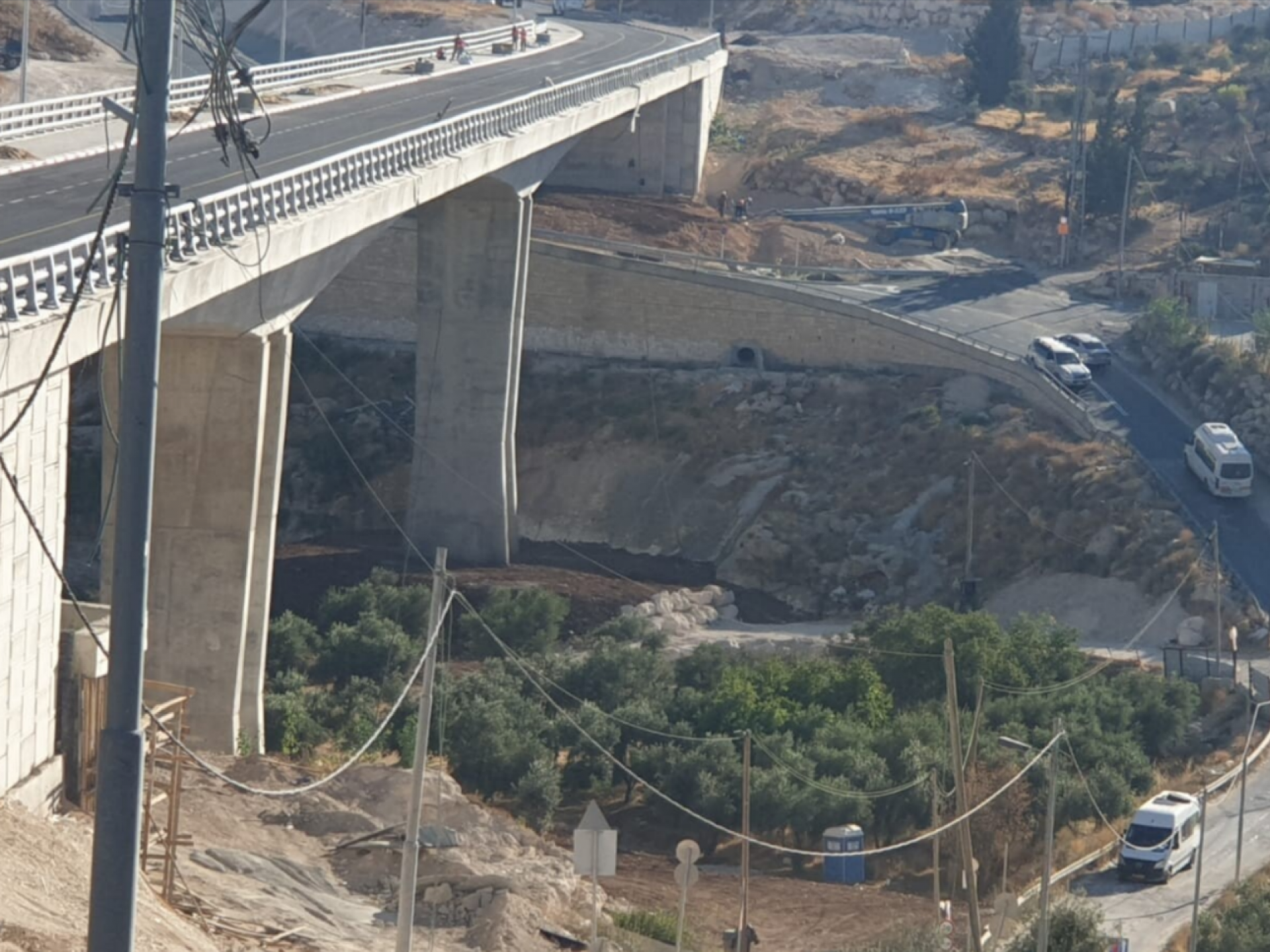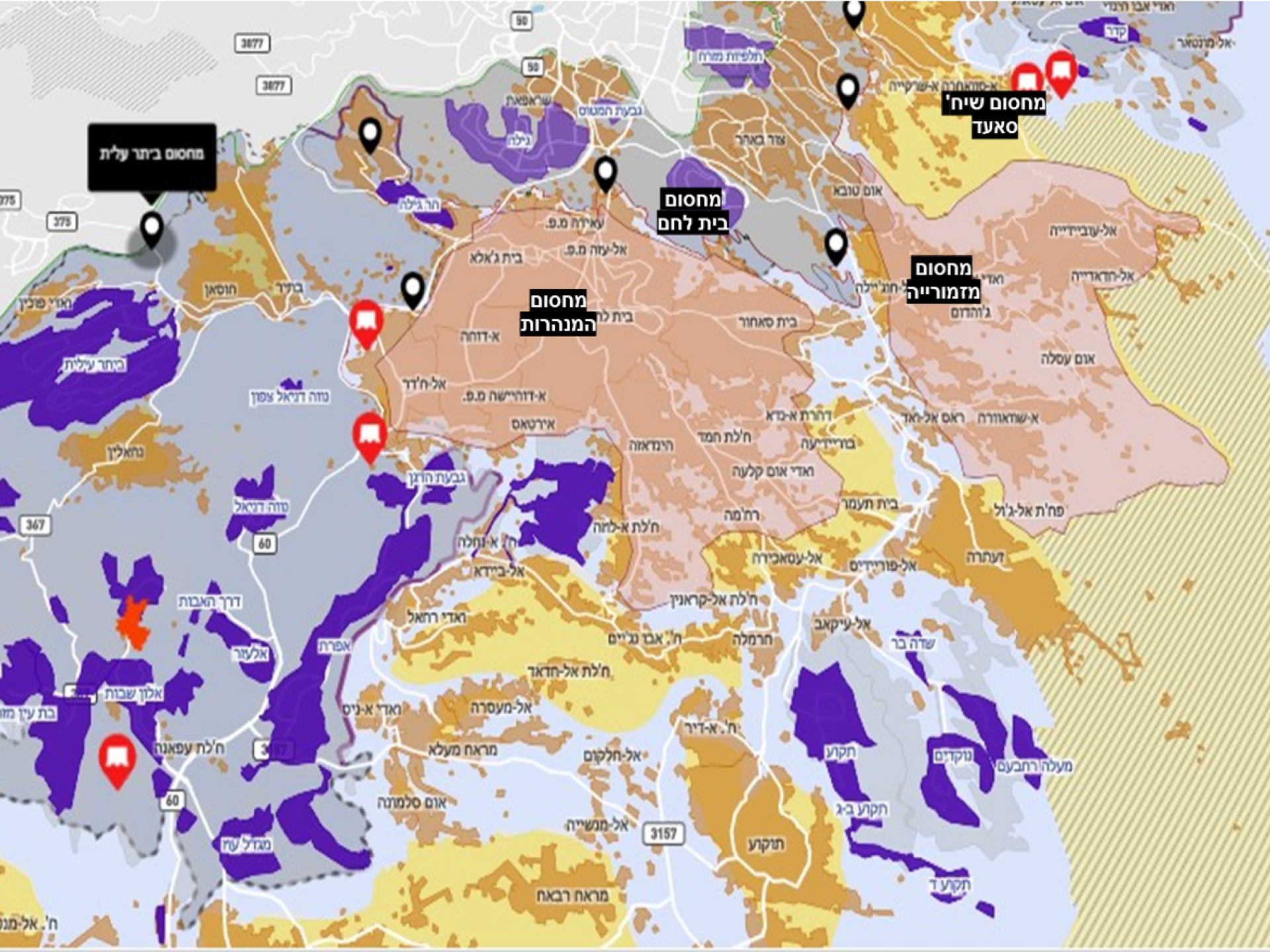The giant Efrat settlement: overt intentions for massive expansion
At the Sheikh Sa'ad checkpoint, they went through Operation Guardians of the Wall in Gaza without preventing passage or special delays at the checkpoint.
A crown of curly razor wire was added to the wall between Shiek Sa’ad and its mother neighborhood of Jabal Mukaber, adding a formidable look.
We were headed for the Beitar checkpoint, which we had not visited in a long time. We drove to it on the new southern American Road, and saw a new bridge that would shorten the road to Jerusalem from the Har Homa and Tekoa area. It is quite clear that the road is intended for settlers, because the Mizmoria checkpoint leading to it from the West Bank is intended only for Israeli car owners. We cut to the renewed tunnel road (60) (another tunnel and two tracks and a new type of wall with an elevation like an awning = monster) and from there through the al-Khader junction to the Beitar checkpoint.
What is interesting in this area (Route 357) is that the area lacks separation obstacles or an electronic fence between Palestinian localities such as Batir and Husan (Area A) and Upper Betar and northern Gush Etzion, to Begin Park adjacent to the Beitar checkpoint. At the Beitar checkpoint stood 4 soldiers. One observes and three check the vehicles passing in the direction of Israel. The conditions of passage have not changed: only Israeli cars and passengers with blue certificates or special permits. The soldiers said that of course there are many attempts to cross through the unfenced area.
Those who have not seen the settlement of Efrat, have never seen a huge settlement. It stretches over several hills and, directing its hungry gaze to connect to the T’koa block from the west - including the settlement of Nokdim and south up - the settlement of Ma'ale Amos and its extentions. And who would have believed - we saw at the exit from one of the southern hills of Efrat a sign advertising a demonstration against the "strategic move of the Arabs for massive construction" and "the takeover of state lands."
We decided to test the feasibility of Gush Etzion’s ardent wishes for expansions and travel from Efrat through Tekoa and Nokdim to Jerusalem. We saw that this intention also developed to the south, to Gush Ma'aleh Amos on the border of the Judean desert. We finally arrived via the Har Homa settlement at the Bethlehem checkpoint. We saw at the entrance to Gilo the workers who had already passed and were now waiting for someone who would like to hire them for daily work. If they do not find a job - they return to Bethlehem and Hebron.
At the checkpoint itself, the people exiting told us that there were difficult days, and today, Sunday, was particularly difficult. The checkpoint opened at 5 a.m., but there were not enough soldiers to check in, and some spent two hours at the checkpoint. The checkpoint’s commander of the police explained that everyone arrives together at 5 and then the soldiers do not cope with the load. She was very nice to us, but when she said "at the end everyone passes" it was clear to us that she sees the crossing at the checkpoint differently from the workers, trying to get to work as early as possible. She simply does not grasp how difficult it is for them.




